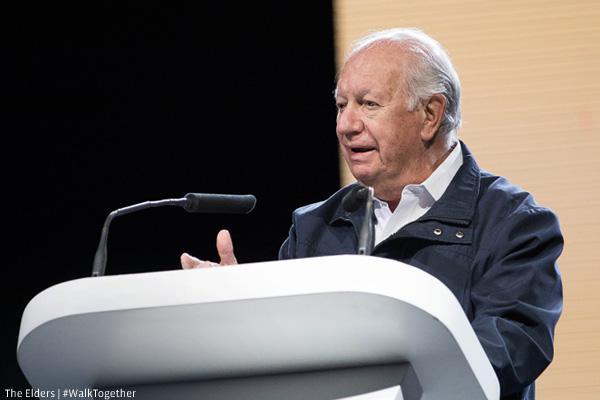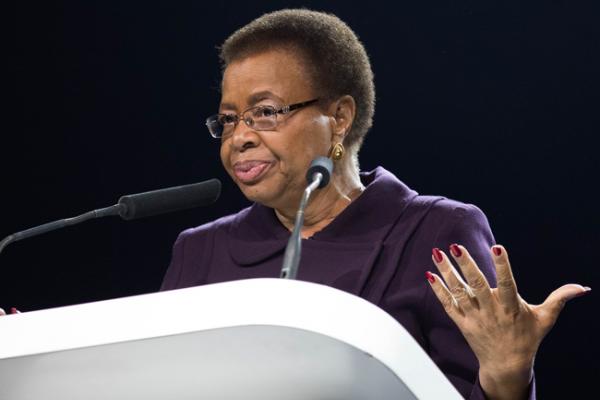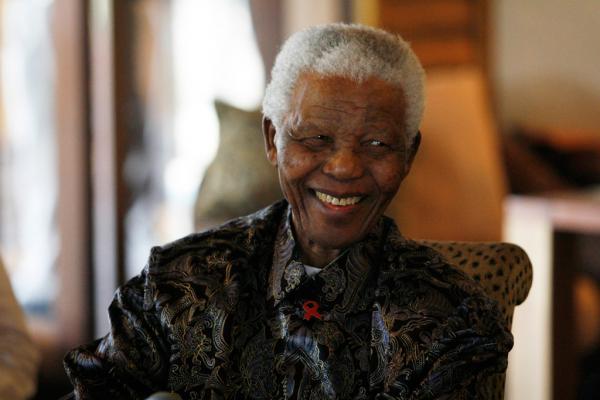Anger and inspiration: what District Six can teach South Africa’s young generation
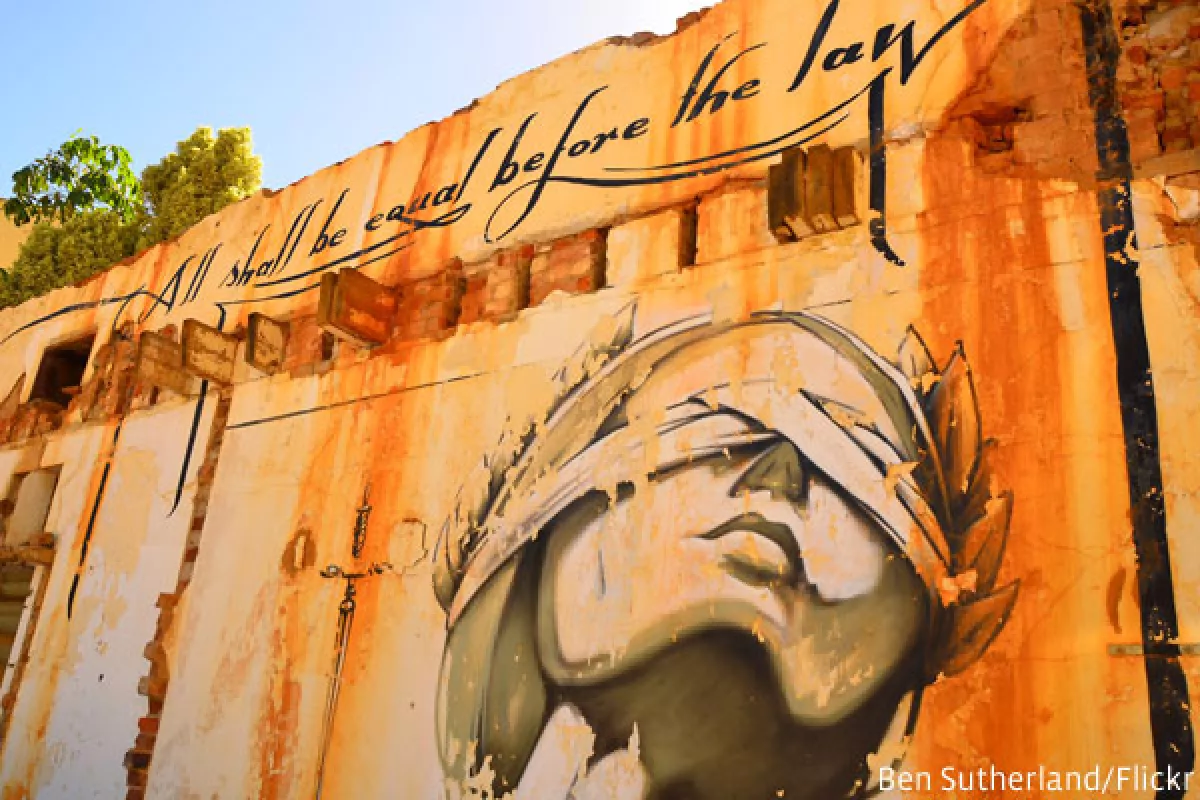
Writing ahead of International Youth Day, student volunteer Jordan Pieters reflects on The Elders' visit to District Six and the crucial role the museum plays in confronting historic and contemporary injustice in post-apartheid South Africa.
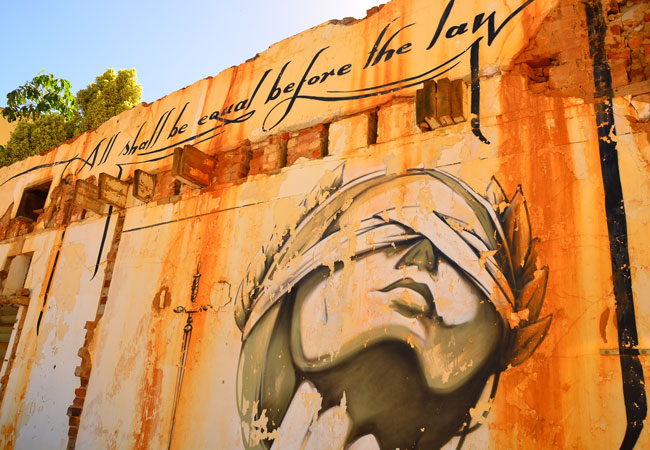
'All shall be equal before the law' graffiti in Cape Town, South Africa. (Credit: Ben Sutherland/Flickr)
Despite popular belief, outside of academic and political spaces and aside from Nelson Mandela Day, ‘Apartheid’ is but a word, a time gone by, a ‘bad’ time. We as the younger generation, the ‘born frees’, never really knew more than the skeletal outline we received during history class in school until we reached University. My education, however, started long before this. It began the day I entered the District Six Museum. It was only then that I realized the extent of what had been done to my people.
To be clear, I was taught the various Apartheid-era laws during my schooling, shown facts and figures. This, however, is in no way indicative of the suffering and wide-scale trauma that was endured under Apartheid. Nor does it speak of the ongoing ramifications and consequential socio-economic issues that were manufactured by Apartheid policies. The District Six Museum is in open retaliation to this wide-spread culture of reducing Apartheid to dates and figures.
I am on the verge of turning twenty years old, making it five full years since I first walked into the District Six Homecoming Centre. The workshop area was being used for a holiday program that I attended, and I was quickly absorbed by the manner in which the Museum operated. It wasn’t a museum of antiquities and written accounts, but instead of the actual people whose histories were being told. It allowed these people to tell their own stories in their own words. Funnily enough, many young people share my story: we walked into the Museum and were unable or unwilling to leave.
When I started working with the Museum, I was inspired by the stories of community resistance and resilience. But it was also a moment that shattered my illusions about the future of my country, and made me realise that ‘hope’ in District Six cannot be separated from continuing anger at injustice. This happens to most young people when they enter University in South Africa, but I was younger when this realization dawned on me. And the reason for this loss of hope? I learnt the truth. That the ‘Rainbow Nation’ was a dream that we never woke up from. It was a beautiful notion, that we could all join hands and there would be unity and peace across the country. There have been steps in the right direction - but these were baby steps at best. It is a harrowing moment when you realize this.
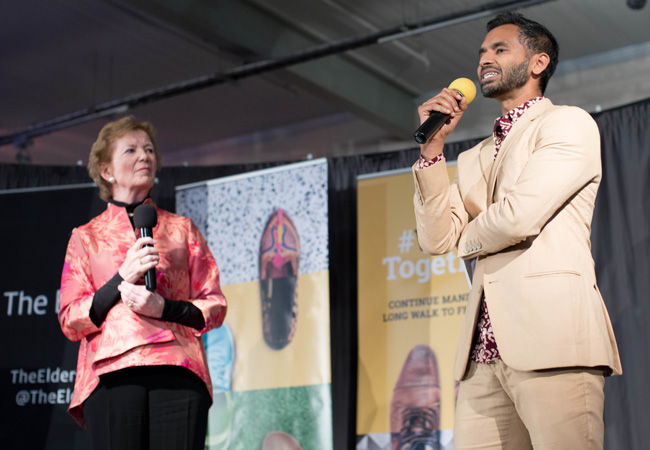
Mary Robinson and Namati founder, Vivek Maru at District 6 Museum to launch Walk Together campaign, in July 2017. (Credit: The Elders #WalkTogether)
Nelson Mandela was a great man, and he was an even greater President. Judging from the speeches made at The Elders’ dinner that I was fortunate enough to attend, it appears that he is an iconic figure for peace and, more importantly, forgiveness across the board. I find it interesting, then, that this is the very thing that the youth use to criticize him. He forgave on behalf of a nation, he forgave the unforgivable, and, worst of all, he forgave them even though they never asked for forgiveness. This is perhaps the reason that we cannot move forward: the pain never subsided, the wound was never treated and they were never sorry.
This is what makes the District Six Museum so vital. The human emotions, the pain and trauma, are laid bare and dealt with. It is a shining example of what this country so critically needs.
Jordan Pieters is a second-year law student at the University of Cape Town and a volunteer at the District Six Museum.

